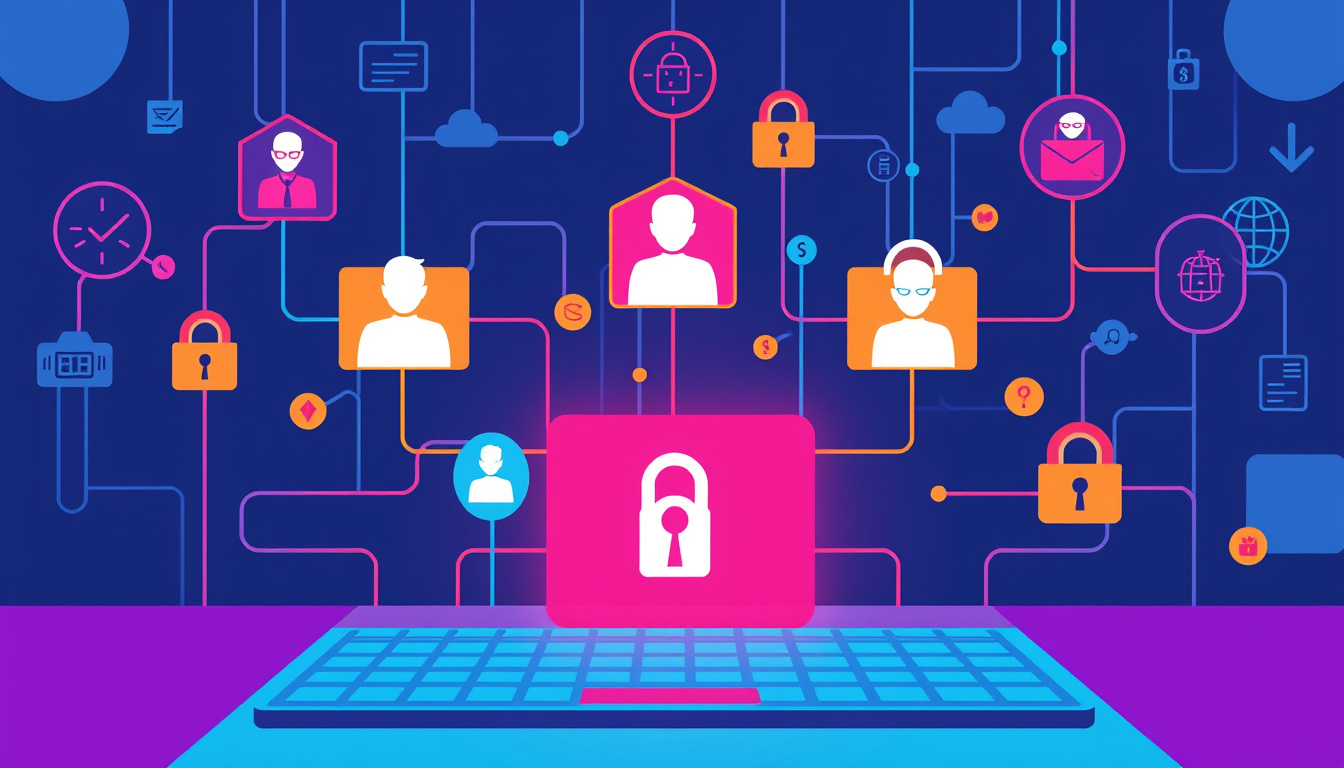In today’s rapidly evolving digital landscape, User Access Management (UAM) has emerged as a critical element for organizations dedicated to safeguarding sensitive information and ensuring efficient operations. As businesses expand and cyber threats become increasingly sophisticated, understanding and implementing effective UAM practices is not just advantageous but essential.
Understanding User Access Management
User Access Management refers to the process of controlling user permissions and access rights to organizational resources such as applications, systems, and data. It is a fundamental subset of Identity and Access Management (IAM), which focuses on verifying identities and managing user privileges. As organizations adopt diverse tools and platforms, UAM plays a pivotal role in ensuring that the right individuals have appropriate access to necessary resources while maintaining robust security protocols.
Core Components of UAM
-
Account and User Management: Organizations manage user accounts linked to specific identities, ensuring that each employee or external partner has the necessary permissions based on their role within the organization.
-
Role-Based Access Control (RBAC): This method groups users into roles that dictate their access levels, making permission management more structured and efficient.
-
Policy Management: Establishing clear access policies helps in monitoring who accesses what resources, when, and how. This is crucial for compliance with regulatory frameworks such as GDPR and HIPAA.
Benefits of Implementing a User Access Management System
Implementing a robust UAM system can lead to numerous benefits:

-
Enhanced Security: By controlling access to sensitive information, organizations can significantly reduce the risk of data breaches.
-
Improved Compliance: UAM facilitates adherence to regulatory standards by maintaining thorough records of who accessed what and ensuring policies are in place to govern access.
-
Streamlined Operations: Automated provisioning and de-provisioning of user access can lead to improved efficiency in onboarding and offboarding processes.
-
Reduced Costs: Effective resource management through UAM can prevent unnecessary expenditure related to unauthorized access and data losses.
Challenges in User Access Management
Despite its importance, UAM can present challenges, particularly as organizations scale. Below are common hurdles that businesses may face:
-
Complex User Environments: As the workforce becomes more distributed and diverse, managing varied roles and permissions can become cumbersome.
-
Shadow IT: Employees often turn to unauthorized external applications to meet their needs. This can create security blind spots where sensitive data may be at risk.
-
Evolving Threat Landscape: Cyber threats are continuously changing, necessitating regular updates to access management strategies to mitigate risks.
Integrating UAM with Zero Trust Principles
A growing trend in information security is the Zero Trust Security Model, which operates on the premise that no one, whether inside or outside an organization, should be trusted by default. This paradigm shift directly impacts user access management by enforcing continuous verification and granular access controls. Key practices include:
-
Continuous Authentication: Rather than relying solely on initial login credentials, organizations should verify user identities throughout sessions.
-
Granular Access Control: Access permissions should be dynamically assigned based on various factors, including user needs, device health, and risk levels.
-
Real-Time Monitoring: Implementing consistent checks and balances allows organizations to observe user behavior and swiftly act upon any suspicious activities.
Setting Up an Effective UAM System
To successfully implement user access management, organizations should consider the following steps:
-
Define User Roles and Access Levels: Clearly delineate roles within the organization and determine what access is appropriate for each role.
-
Automate Processes: Utilize technology to streamline the onboarding and offboarding process, ensuring timely and accurate access changes.
-
Monitor and Audit: Regularly review access logs and conduct audits to ensure compliance and identify any security incidents.
-
Educate and Train: Provide ongoing training to employees about access policies and the importance of maintaining security.
-
Integrate Technology Solutions: Leverage IAM tools that integrate with UAM to create a seamless and comprehensive access management framework.
Conclusion
Mastering User Access Management is paramount in protecting organizational resources and enhancing overall security. As businesses navigate an increasingly complex digital landscape, establishing and refining UAM strategies will empower them to manage user access effectively while safeguarding sensitive data. By embracing modern approaches, such as Zero Trust and automation, organizations can ensure they remain agile, secure, and compliant in their digital ecosystems.



